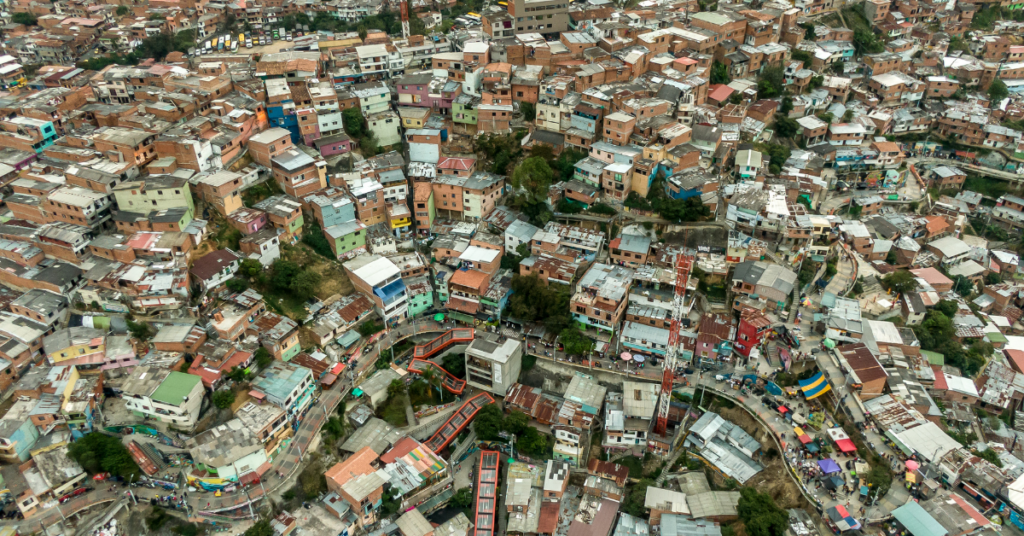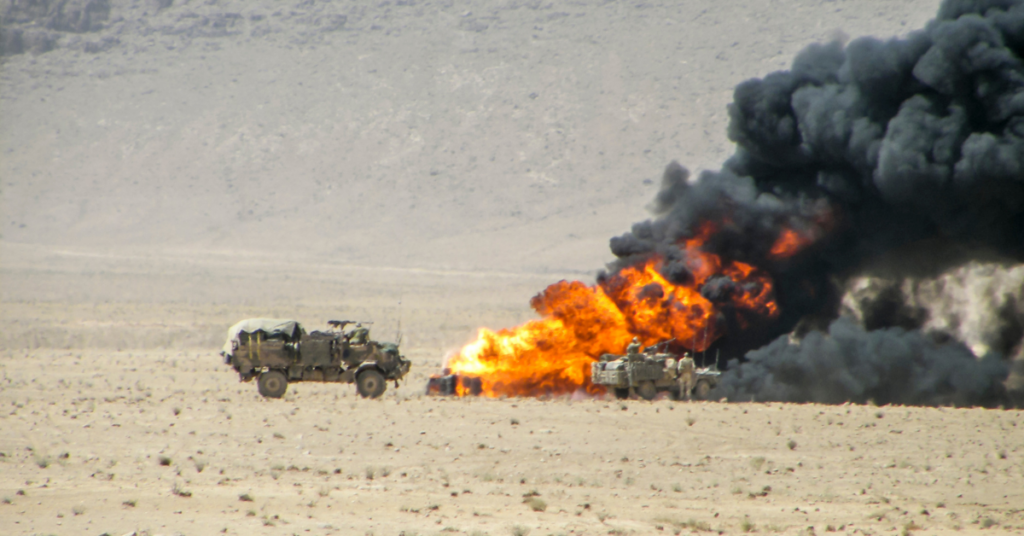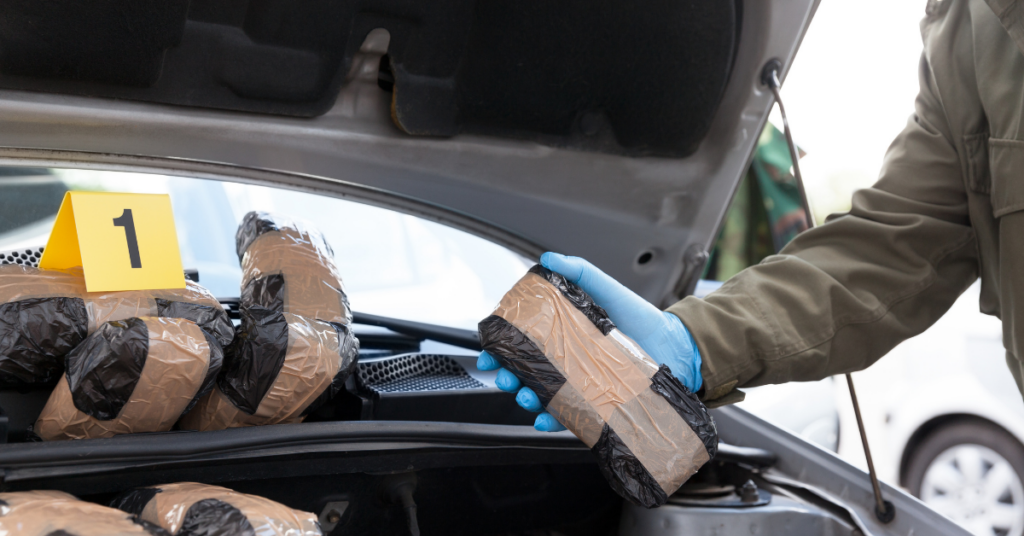Fighting terrorism and narcotics trafficking is difficult. Both terrorism and drug traffickers operate as clandestinely as possible. They also tend to infiltrate the institutions being leveraged to combat them. When terrorists and narcotics traffickers operate in the same area, the situation becomes even more complex through their shifting alliances.
The key to combatting narco-terrorism is obtaining and controlling reliable, timely intelligence. This intelligence can be difficult to gather in areas controlled by narco-terrorists and difficult to keep corrupt elements from reporting back to their true leaders.
Scalable, advanced intelligence techniques may be able to help, even when resources are limited, institutions are corrupt, and focus is elsewhere.
Table of Contents
What Is Narco-terrorism?

Narco-terrorism as a concept was first defined in the 1980s to describe the violent tactics used by drug lords in South America. The most famous example of narco-terrorism involved drug lord Pablo Escobar, who used corruption, bombings, and assassinations to control the government of Columbia. The techniques he used were copied by other traffickers and terrorists.
Narcotics traffickers and terrorists often find themselves in uneasy relationships.
Narcotics traffickers benefit from terrorists’ ability to disrupt normal social operations using violence and ideological recruiting. Terrorists benefit from narcotic traffickers’ deep pockets and their ability to subvert government operations through bribery.
To gain recruits, both terrorist groups and narcotics traffickers present themselves as solutions to a problem. Narcotics traffickers promise to distribute wealth. Terrorists promise to destroy unwanted social structures.
However, both drug trafficking and terrorism fail to deliver those solutions, almost by design.
For example, farmers may use cropland to grow drug-related plants such as coca or opium poppy instead of food. However, traffickers take most of the drug profits. Farmers receive just enough money to prevent them from planting anything else, and the entire area starves and stays impoverished.
Terrorism makes use of poverty and perceived injustice to incite their recruits to attack. These attacks do not address injustice, but only serve to redirect injustice toward those the terrorists wish to disrupt. These disruptions lead to increased poverty and injustice, which the terrorists blame on their foes and use to incite further attacks. Areas controlled by terrorists suffer from even more poverty and injustice than before.
Terrorists and drug traffickers are often ideologically opposed. This does not prevent them from working together against a common foe. Even when they oppose each other, they create chaos and prevent the return of stability and prosperity.
Why is narco-terrorism so difficult to fight?

Combating drug trafficking and terrorism together seems like a logical solution to help reduce costs. For example, increasing border security and screening international shipments can help stop both drug traffickers and terrorists.
However, combining efforts can also lead to disruption of existing strategies. Those fighting terrorism have sometimes allowed drug traffickers to operate in order to gain their support in the more immediate fight against terrorism. This often leads to terrorists with access to funds derived from trafficking, and an increase in overall disruption, rather than any lasting setbacks for the terrorists.
Narco-terrorism includes a wide range of alliances formed by drug traffickers and terrorists. Terrorists might raise revenues by “taxing” the drugs that move through their territory. Drug traffickers might assassinate anti-narcotics journalists. Narco-terrorism also includes terrorists who turn to drug production and distribution to raise funds.
Alliances between drug traffickers and terrorists do not always run smoothly. For example, in 1981, the M-19 terrorist organization of Colombia abducted the sister of a Medellín Cartel member. The cartel formed a paramilitary force to assassinate terrorists and their supporters in order to force her return.
The enmity did not last. Later, in 1985, evidence suggests the Medellín Cartel financed M-19’s attack on the Columbian Palace of Justice to prevent cartel members from being extradited to the U.S. and to destroy the criminal files stored in the building.
Even when terrorists and drug traffickers work against each other, their conflict serves to destabilize an area, disrupting normal economic activities, and increasing benefits to both. Whether they cooperate or are in conflict seems to matter little to the larger situation. The resulting chaos is much the same either way.
How can we combat narco-terrorism?

Resisting and repairing the disruption of narco-terrorism is not a new effort. Thousands of lives, billions of dollars, and dozens of years have been dedicated to eradicating narco-terrorism in Afghanistan alone.
One element that consistently frustrates those who fight terrorism and drug trafficking is the lack of consistent, reliable intelligence.
What terrorist groups currently exist? Are they unified or vulnerable to disruption? Which officials are corrupt? Where are drug crops being planted? Where are the terrorists or drug traffickers located? What routes do they take? Our efforts to resist narco-terrorism depend on the answers to those questions.
We must also answer questions related to relieving poverty and rebuilding institutions. What infrastructure is needed to relieve poverty? Where is it most critical to send humanitarian aid? Where has climate change disrupted normal farming and left the area vulnerable to recruiting by traffickers or terrorists? Where are the best places to build hospitals and schools? Where can profitable alternatives to drug crops be grown?
To gain the answers to these questions, our intelligence processes must be able to adapt to exponentially increasing demands. New data from social media, publicly available information, the Internet of Things, satellite imagery, and other sources can be valuable if processed quickly and efficiently.
Handling the data, particularly without an open presence in hostile countries like Afghanistan, is not a trivial task. Solutions will need to provide automated support, alerts, and scalability.
How can we use advanced intelligence tools to fight narco-terrorism?

Advanced intelligence tools can help the fight against narco-terrorism. Open-Source Intelligence (OSINT) and Geospatial Intelligence (GEOINT) can be used to gather and coordinate information. Advanced data analytics and a Common Operating Picture (COP) can help secure, process, and disseminate the results.
OSINT is the collection, processing, and analysis of publicly available information. It includes creating in-depth background checks of persons of interest, assessing an organization’s financial situation, and more.
GEOINT is the correlation of various types of data with geospatial information. GEOINT techniques map information in space and time, often with real-time, dynamic maps.
GEOINT and OSINT are increasingly being used in combatting human trafficking.
OSINT and GEOINT are powerful, but require the coordination of multiple other tools, like cloud-based storage, AI/ML data processing, advanced data analytics, and security solutions, to make them truly useful in the fight against narco-terrorism.
To integrate and coordinate these tools requires a platform capable of integrating a wide variety of inputs and tools. This type of platform, known as a Common Operating Picture, is a system of systems innovated through the Department of Defense. A COP uses cloud computing and AI/ML to identify, tag, prepare, store, and secure data at the most basic level. The prepared data can then be used across the platform’s integrated, cloud-based tools as needed across every level of an operation, from troops in austere locations to analysts and leadership.
Use of COP platforms is becoming more common. COP platforms combine business intelligence, situational awareness, and automation tools in real time. The combination of tools helps businesses handle day-to-day operations more efficiently, at the same time they gather and process data for analysis. For an example of a COP used across organizations and borders at every level, see our use of Signals GIS in Afghanistan.
Because of a COP’s ability to integrate and secure a variety of data sources at a very basic level, data can be collected in ways that help avoid detection by hostile or corrupt forces, yet still be integrated into the larger analytic picture in near-real time.
For example, an informant’s warning of a possible narco-terrorism attack can be collected securely via web form. The information can be verified using OSINT techniques applied to publicly available information. Then the intelligence can be integrated into maps and other location-based services using GEOINT. Finally, the intelligence can be distributed securely on a variety of devices from the cloud to edge devices at austere locations, in near-real time, in a way that protects informants and other sources of information.
Human analysts will still need to review information, compare hypotheses, and present their predictive findings, but their data preparation times can be greatly reduced. This can allow analysts to respond in near-real time to a report of an offshore drug smuggling operation. They can coordinate an anonymous tip with satellite information, social media activity by the suspects, the locations of law enforcement resources in the area, and more in real time. Law enforcement can plan a response and distribute information and instructions securely and individually, protecting operations from internal corruption as well as exterior disruption.
Drug traffickers and terrorists use their shifting alliances and hostilities to increase the amount of disruption in an area to further their goals. Responsive monitoring and analysis are needed to assess constantly changing situations on the ground, ones in which the possibility of corruption always exists.
Those fighting narco-terrorism must be prepared to overturn their current evaluations and plans in the face of rapidly changing conditions. They must also be prepared to focus efforts in the areas where they are most effective, saving precious resources for the most critical tasks, particularly in areas where our presence is not welcome.
Using advanced intelligence tools to combat narco-terrorism will help analysts produce timely assessments and respond to emerging events as well as help limit vital information from reaching malicious actors.
Fighting narco-terrorism will not be an easy task. Obtaining better, timelier, and more secure intelligence to combat it will be essential.
Find out more about Quiet Professionals’ advanced data analytics platform, Signals GIS.